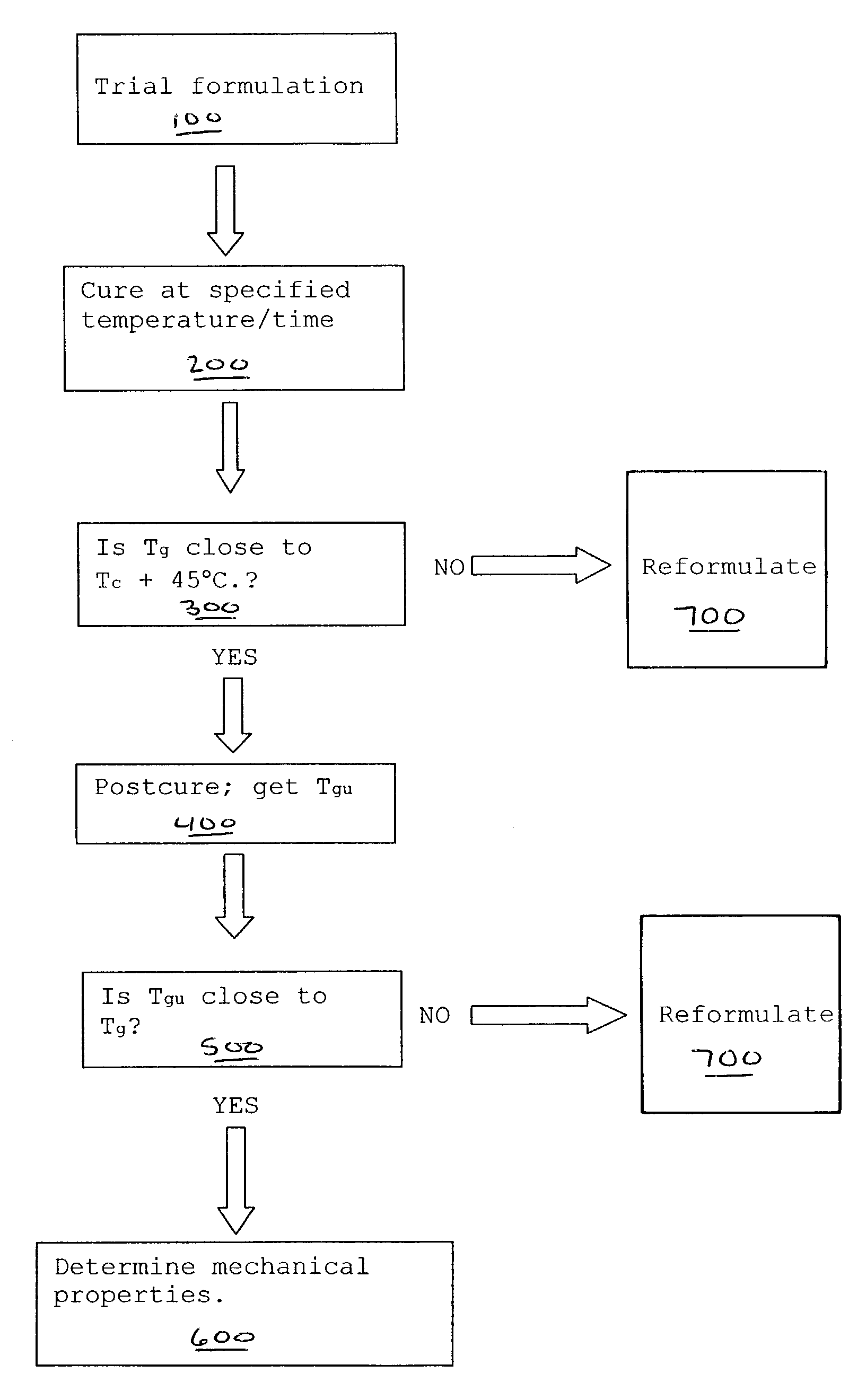Epoxy hardeners for low temperature curing
- Summary
- Abstract
- Description
- Claims
- Application Information
AI Technical Summary
Benefits of technology
Problems solved by technology
Method used
Image
Examples
examples
[0205]The following examples illustrate the preparation and use of the novel polyols for each class of hardener.
example i.1
Preparation of TMP / BGE
[0206]6.42 g TMP, 6.80 g BGE (epoxy equivalent weight 140) and 0.26 g BDMA (2 pph) were loaded into a 250 ml boiling flask together with a magnetic stir bar and a water condenser was attached. The flask was placed in a heating mantle and the assembly placed on a stir plate. The mantle was heated by means of a variable transformer set at 30%. After heating for 20 min., the temperature was 150° C. The product was a medium amber liquid. The BDMA catalyst remained as part of the product.
example i.2
Preparation of BPA.2TMP
[0207]6.50 g BPA and 8.03 g TMP (5% excess) were placed in a 100 ml beaker with a magnetic stir bar and the beaker was placed on a stirring hot plate at a surface temperature of 150° C. After 15 minutes, BPA was entirely dissolved at a temperature of 127° C. The product was a colorless, medium viscosity liquid which crystallizes slowly over a period of several days if left undisturbed.
PUM
| Property | Measurement | Unit |
|---|---|---|
| Temperature | aaaaa | aaaaa |
| Fraction | aaaaa | aaaaa |
| Glass transition temperature | aaaaa | aaaaa |
Abstract
Description
Claims
Application Information
 Login to View More
Login to View More - R&D
- Intellectual Property
- Life Sciences
- Materials
- Tech Scout
- Unparalleled Data Quality
- Higher Quality Content
- 60% Fewer Hallucinations
Browse by: Latest US Patents, China's latest patents, Technical Efficacy Thesaurus, Application Domain, Technology Topic, Popular Technical Reports.
© 2025 PatSnap. All rights reserved.Legal|Privacy policy|Modern Slavery Act Transparency Statement|Sitemap|About US| Contact US: help@patsnap.com

